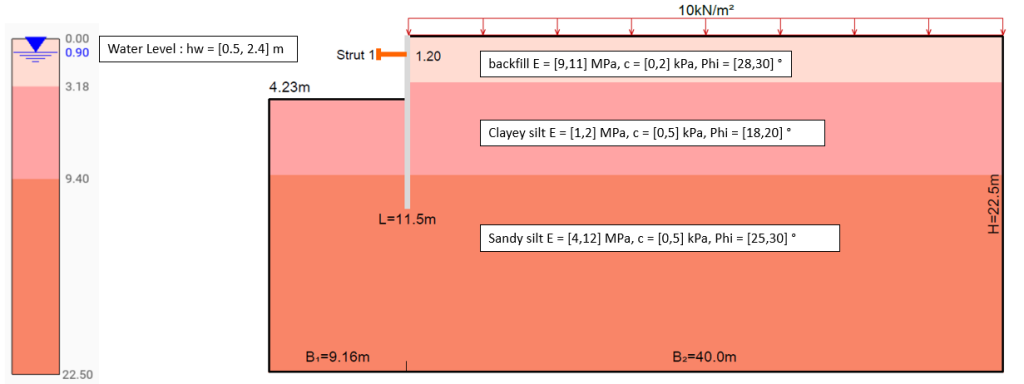ZSWalls+R
Mastering uncertainties in deep excavations calculations

Probabilistic analyses
The input parameters of calculation models in civil engineering are marred by uncertainties. In geotechnics in particular, soil strength and deformation parameters are defined on the basis of a small number of boreholes. The level of the water table and load values are also uncertain.
Conventional (or deterministic) approaches, documented in the standards and norms, recommend the use of global or partial safety factors to define conservative parameters in order to design structures such as foundations, retaining walls, tunnels, slopes and embankments. Within this deterministic framework, the quantification of risk is very difficult (not to say impossible), since its commonly accepted definition encompasses the notions of danger, severity, acceptability, and depends mainly directly on the probability of occurrence of a failure.
Probabilistic approaches make it possible to take into account these uncertainties and define the input parameters of our models not in a deterministic way, but rather with the help of statistical distributions. The results (forces, displacements, safety factors) will therefore also be probabilistic, the uncertainties being propagated through our calculation model.

ZSWalls+R™ = ZSWalls™ + Reliability
ZSWalls+R™ embeds all these concepts via www.uqlab.com in order to apply it to ZSWalls™, a 2D deep excavation - retaining wall analysis software program. The program is based on the finite element method including coupled formulation for fully- and partially saturated two-phase media and advanced constitutive laws. ZSWalls™ offers a user-friendly graphical interface, simplifed overall input strategy, automated and user-configured, ready to print reporting, a variety of support elements which can be associated with different excavation methods like: retaining walls
(diaphragm or sheet-pile), tiebacks - anchors, nails, internal bracing - struts, top/down technique - slabs.
Sheet-pile wall example
A 4.2 meters deep excavation has to be constructed in relatively bad soil conditions, consisting of a backfill and marsh deposits. The water table lies close to the soil subsurface. A sheet-pile wall has been predesigned, with one level of bracing, 1.20 m below the sheet-pile’s head.

An existing silo stands 5 to 10 meters behind the excavation. According to the engineers, the settlement of this silo has to remain smaller than 3.5 cm. A first deterministic computation with ZSOIL® yields a 4.0 cm settlement.

The same settlement can be obtained with ZSWalls™, in a matter of minutes, thanks to the simplified input definition screen.

Within the deterministic framework, it is hard to define the probability that the settlement of the silo will actually exceed 3.5 cm, given that the deterministic approach with characteristic soil values gives us a settlement of 4.0 cm.



